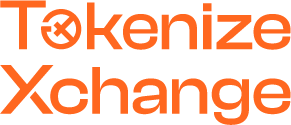A Short Introduction to Automated Market Makers (AMMs)
>>>Before reading this article, feel free to check out our real easy guide to yield farming<<<
To comprehend Automated Market Makers (AMMs), it’s essential to first have an understanding of traditional markets, liquidity, and how liquidity pools function.
In centralised exchanges, ‘liquidity’ and ‘asset pricing’ are crucial elements. Order books display the prices at which traders wish to buy or sell, and order book matching systems match and execute the trades. The most recent price at which the asset was traded will be displayed as its market price.
Buy and sell requests from traders have to be constantly met to prevent an ‘illiquid’ market, or a market in which assets cannot be easily sold or traded. This is why exchanges employ the services of market makers (e.g. institutional investors) to trade assets at any given price to ensure liquidity.
Therefore, in the context of decentralisation, Automated Market Makers (AMMs) are smart contracts that replaces a third party’s role of facilitating trades. It enables digital assets to be automatically traded in liquidity pools (a shared fund of assets), rather than between buyers and sellers. Prices are predetermined by an algorithm, and there are no intermediaries being employed to provide liquidity.
This means that users are directly trading against liquidity pools. Anyone can provide liquidity and become market makers, enabling them to earn a cut of the transaction fees. This in turn attracts liquidity and users to a platform.
>>>Check out our easy peasy guide to decentralised finance (DeFi)!<<<
Examples of AMMs
Uniswap is a decentralised exchange (DEX) that popularised the AMM model. It enables users to swap tokens without an intermediary dictating the price. Prices are set by a mathematical formula: X*Y=K where X and Y represent the price of each token in the pool and K being a constant.
Anyone can create liquidity pools as long as it’s a pair of ERC-20 or ERC-20 compliant tokens. UNI is the governance token of Uniswap.
Sushiswap is a clone of Uniswap. The platform conducted a ‘vampire attack’ whereby liquidity was essentially ‘robbed’ from Uniswap.
Sushiswap users can participate in Pool 2s. These are liquidity pools whereby Sushiswap’s native token — SUSHI is paired with another asset (e.g. Ether or a stablcoin).These pools have the highest annual percentage yield (APY) to attract users and liquidity. Because of the high APY, people are incentivised to yield farm sushi, or buy it off an exchange. This creates a demand for the token, inflating its price and the pool’s APY.
Curve Finance is an AMM focused on stablecoins and ‘wrapped’ Bitcoin (this allows Bitcoin to be traded on the Ethereum network). The trading of stablecoins mean that the risk of impermanent loss and slippage (the executed price ends up different from the quoted price due to volatility) is significantly reduced for liquidity providers and traders respectively. Curve has a governance token — CRV.
Tokenize Xchange is the cheapest and easiest fiat-on-ramp to explore the DeFi ecosystem! We’re now offering credit/debit card top ups at an extremely competitive rate. Easily purchase a wide range of digital assets including ETH, SUSHI, UNI, and CRV on Tokenize and be a part of the future of finance now!
Risks
A significant risk of AMMs is impermanent loss. This means that the price of the deposited assets (into a liquidity pool) decreases, resulting in a loss of value. However, platforms like Uniswap charge a 0.3% fee on all trades which is then distributed among liquidity providers. Therefore, users may still be attracted to provide liquidity even with the risk of impermanent loss if the pool has a high trading volume.
DeFi platforms are also susceptible to smart contract bugs and wallet hacks. We strongly advise users to conduct due diligence before committing their assets to platforms that advertise unusually high returns.

AMMs is still an infant technology within a budding industry— DeFi. However, it’s already widely adopted in the DeFi ecosystem, and could well be a significant component in a decentralised future.
Keep Tokenizing! Till next week.
Disclaimer
Cryptocurrencies are subjected to high market risk and volatility despite high growth potential. Users are strongly advised to do their research and invest at their own risk.



